Intel Haswell Low Power CPU Review: Core i3-4130T, i5-4570S and i7-4790S Tested
by Ian Cutress on December 11, 2014 10:00 AM ESTGaming Benchmarks on Processor Graphics
The faster processor graphics become, the more of the low end graphics market is consumed - if the integrated graphics are better than a $50 discrete GPU, there ends up being no reason to buy a discrete GPU. This might seem a little odd for some vendors who also have a discrete GPU business. The counter argument is that integrated graphics is only comparable to low-end GPUs, which are historically low margin parts and thus might encourage users to invest in larger GPUs, especially as demands in resolution and graphical eye-candy increase. The compute side is also important, and the homologation of discrete to integrated graphics architectures helps software optimized for one also end up accelerated on the other.
All our integrated processor graphics tests are performed at 1280x1024 at low settings.
F1 2013
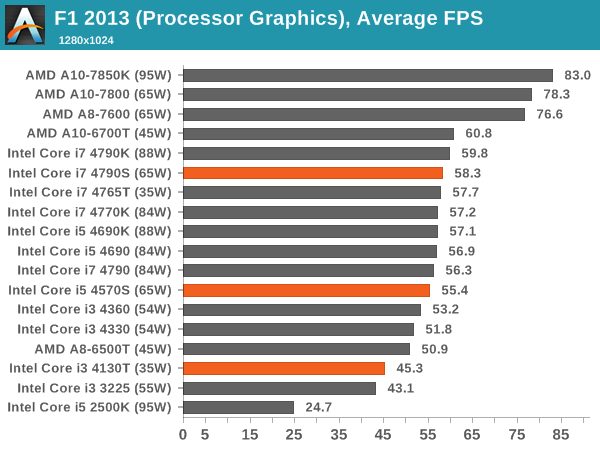

Bioshock Infinite
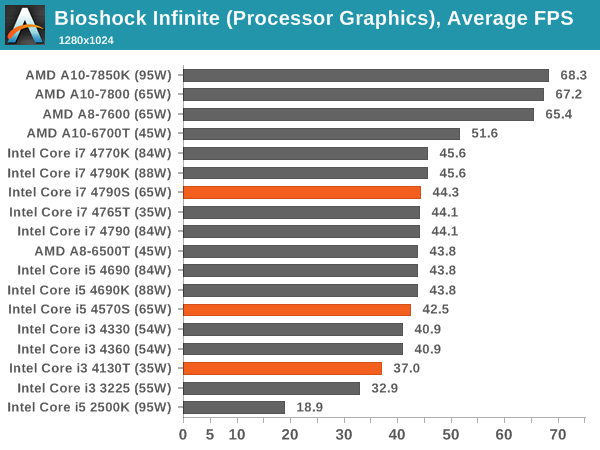
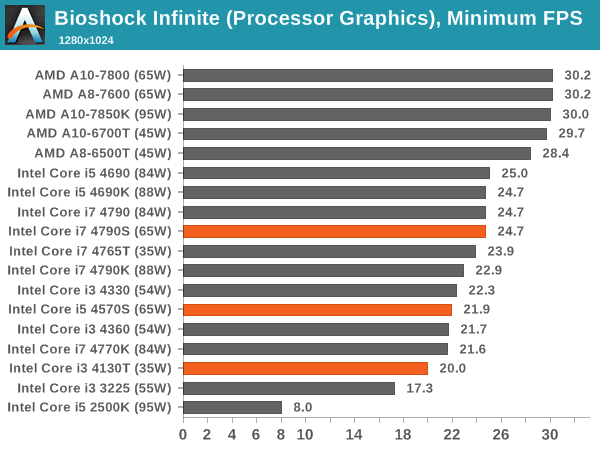
Tomb Raider
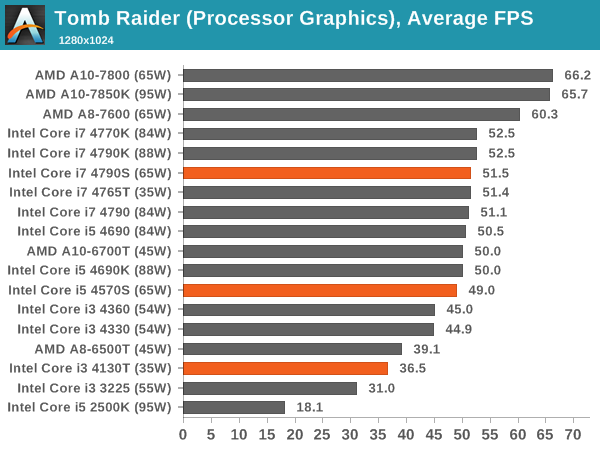
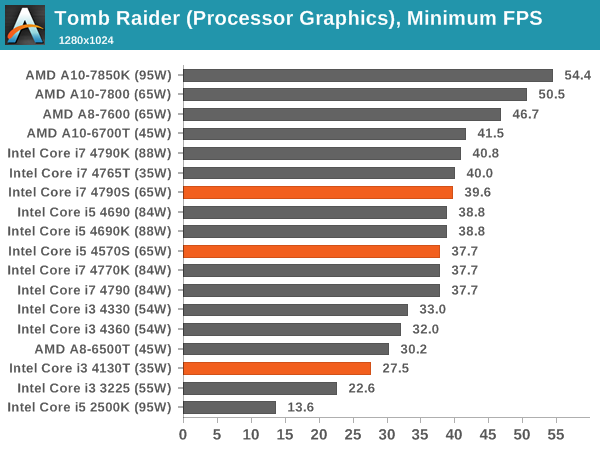
Sleeping Dogs
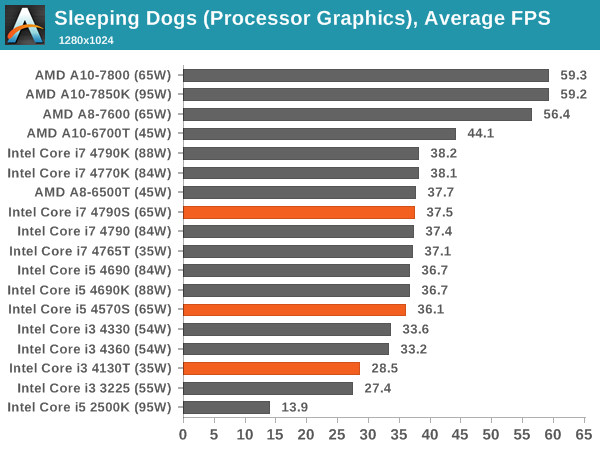
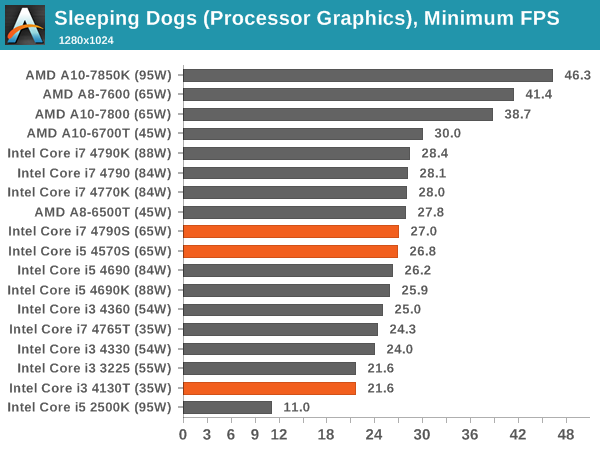
3DMark FireStrike















76 Comments
View All Comments
Wolfpup - Friday, December 12, 2014 - link
I'm actually looking at an HP all in one (for a kitchen computer) that has an S series CPU, and was wondering what the heck it was.35 watts for a dual core Haswell @ at least 2.9GHz is actually really impressive when you think about it. I still can't help but compare everything to my 125-watt single core 3.4GHz Prescott from ten years ago. That's a ton more performance crammed in to about 1/4 the power :) Also seems like the 35 watt parts are basically like the normal mobile parts are (before low end systems switched from 35 and 45 watt cpus to 15-19 watt ULV CPUs practically across the board)
samer1970 - Saturday, December 13, 2014 - link
Hello,can you please run the benchmarks again for the xeons with HT disabled? i want to see how the 65Watts 12 cores compares to the 6 cores i7 with hyperthreading disabled on the 12 cores one.
that is 12 cores xeon at 1.8 ht disabled versus 6 cores at 3.6 with ht enabled , which is lolgically 1.8 with ht but at 140w
FYoung - Saturday, December 13, 2014 - link
It would be beneficial to Anandtech and its readers to edit articles like this more closely. It has multiple instances of confusing wording and wordiness.I mean this as constructive criticism in case it escaped your attention, in the hope that Anandtech will not let its standards slip.
LoneWolf15 - Sunday, December 14, 2014 - link
For future articles like this, can you post the integrated graphics? It can be crucial to people building an HTPC.LoneWolf15 - Sunday, December 14, 2014 - link
Clarification: can you post the model of IGP (4400,4600) in your charts? This can be very useful for someone who is saving power by not having a discrete GPU but wants the best Intel offers.coder543 - Sunday, December 21, 2014 - link
I don't know why you're using Linux-Bench. Phoronix Test Suite (PTS) is *the* well-established benchmark suite for Linux, and it can test a wide range of applications and synthetic benchmarks in a completely automated fashion.